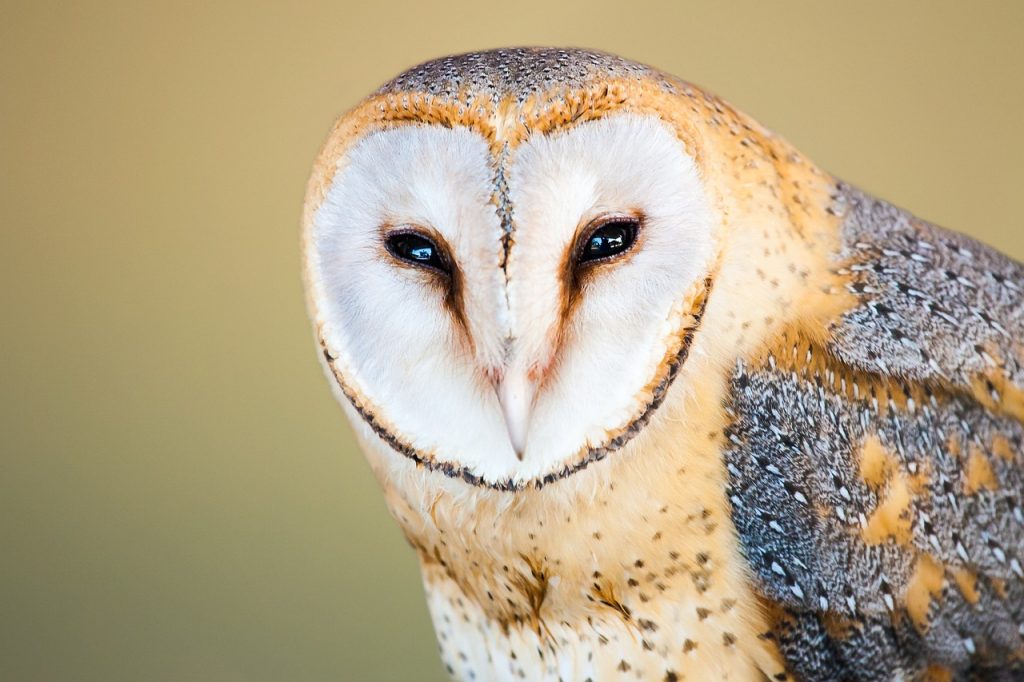
Owls have long fascinated humans, featuring prominently in folklore and popular culture. These intriguing birds of prey belong to the order Strigiformes, which includes over 200 species worldwide—about 50 of which can be found in Africa. Africa’s owl species are split between two families: the Strigidae, or true owls, and the Tytonidae, or barn and bay owls. Here, we explore the diverse and remarkable owls that call Africa home.
Eagle Owls
Eagle owls are closely related to the horned owls of the Americas and are known for their prominent ear tufts. The genus Bubo, which includes eagle owls, features seven species in Africa.
Spotted Eagle Owl
One of the most widely distributed species south of the Sahara, the Spotted Eagle Owl is recognized by its mottled plumage and yellow eyes.
Verreaux’s Eagle Owl
Also known as the Giant Eagle Owl, this is the largest African owl, reaching up to 26 inches in height with a wingspan of nearly five feet. Despite its size, it is rarely seen due to its vast territory and low population density. These owls are opportunistic predators but face threats from habitat destruction and persecution.
Shelley’s Eagle Owl
Found in Central and West Africa, Shelley’s Eagle Owl is a large, dusky species at risk due to habitat loss. It inhabits rainforests and is evaluated as “vulnerable” by the IUCN.
Scops Owls
Scops owls, belonging to the genus Otus, are small, agile owls with camouflaged plumage. Africa hosts 13 species of Scops owls.
African Scops Owl
At just six inches long, the African Scops Owl is one of the smallest owl species on the continent. It is found in various habitats, including woodlands and gardens, and has plumage that blends seamlessly with tree bark.
Seychelles Scops Owl
Critically endangered, this owl has a population of fewer than 300 individuals. Habitat destruction and invasive species have severely impacted its numbers.
Rainforest Scops Owl
Endemic to Madagascar, the Rainforest Scops Owl inhabits humid tropical forests and feeds on insects and small vertebrates.
Barn Owls
Barn owls belong to the genus Tyto and are among the most recognizable owls, known for their ghostly appearance and eerie screech.
Western Barn Owl
The most widespread barn owl species, it can be found across Europe, parts of Asia, and most of Africa. These owls nest in human-made structures and are often spotted during the day flying between roosts.
African Grass Owl
This species inhabits grasslands and marshes, hunting for small mammals. It is closely related to the barn owl and faces threats from habitat destruction.
Red Owl
Endemic to Madagascar, the Red Owl has striking orange-red plumage with black spots. It is a forest-dwelling species and is currently evaluated as “vulnerable” due to declining populations.
Pygmy Owls
Pygmy owls, or “owlets,” belong to the genus Glaucidium and include some of Africa’s smallest owls.
Pearl-spotted Owlet
This species is widespread across sub-Saharan Africa and is known for its distinctive call. Despite being active mainly at night, it is often seen hunting during the day.
Red-chested Owlet
At just 5.5 inches long, this tiny owl inhabits tropical rainforests and preys on insects and small vertebrates.
Fishing Owls
The genus Scotopelia includes three species of fishing owls, all of which are found in sub-Saharan Africa.
Pel’s Fishing Owl
The most widely distributed fishing owl, Pel’s Fishing Owl, is a large species inhabiting riverine forests. It has minimal feathering on its legs and spiky scales on its feet to help grip slippery fish.
Rufous Fishing Owl
Endemic to West Africa, this species is in rapid decline due to habitat loss and is classified as “vulnerable” on the IUCN Red List.
Vermiculated Fishing Owl
With a wide range and stable population, this species inhabits tropical west-central Africa and is less threatened than its relatives.
Wood Owls
Wood owls, belonging to the genus Strix, are robust, powerful raptors found in forests.
African Wood Owl
Widespread across sub-Saharan Africa, this owl has rich brown plumage, dark eyes, and white brows. Its call is often heard at night, with pairs calling in duet.
Maghreb Owl
Found in northwestern Africa, this species inhabits rocky ravines and deserts.
Desert Owl
This owl is found in the Arabian Peninsula, including parts of Egypt, and thrives in desert environments.
White-faced Owls
The white-faced owls belong to the genus Ptilopsis and have striking facial features.
Northern White-faced Owl
This species ranges from Senegal and Gambia in the west to Kenya in the east. It is paler and has more white in its plumage compared to its southern counterpart.
Southern White-faced Owl
Found across southern Africa, this owl has grey plumage with dark streaks and white underparts.
Eared Owls
Eared owls are named for their prominent ear tufts and distinctive facial discs.
Marsh Owl
Inhabiting grasslands and marshes in southern Africa, the Marsh Owl nests on the ground and feeds on insects and small vertebrates. Habitat loss is a significant threat to this species.
Abyssinian Owl
This rare species is found in Ethiopia and Kenya.
Madagascan Owl
Endemic to Madagascar, this owl faces threats from habitat destruction.
Long-eared Owl
With a wide range across the Northern Hemisphere, the Long-eared Owl can be found in pockets of North Africa.
Little Owls
The little owls belong to the genus Athene and are small with speckled brown plumage.
Owl of Minerva
Also known as the Little Owl, this species is widespread across Eurasia and North Africa. It is associated with the Roman goddess Minerva and symbolizes wisdom.
White-browed Owl
Endemic to Madagascar, this small owl inhabits dry forests and cultivated lands.
Itombwe Owl
Also known as the Congo Bay Owl, the Itombwe Owl belongs to the genus Phodilus and resembles barn owls in appearance. It inhabits montane forests in Central Africa and is listed as endangered due to habitat loss.
Maned Owl
The Maned Owl, the only species in the genus Jubula, has long, white-tipped ear tufts that resemble a mane. It is found in tropical rainforests of West and Central Africa and nests in tree cavities.
Final Thoughts
Africa is home to a diverse array of owl species, each playing a crucial ecological role in controlling pest populations. Despite their value, owls are often persecuted due to myths and misconceptions. Increased awareness and education are needed to protect these mystical birds and ensure their survival.
